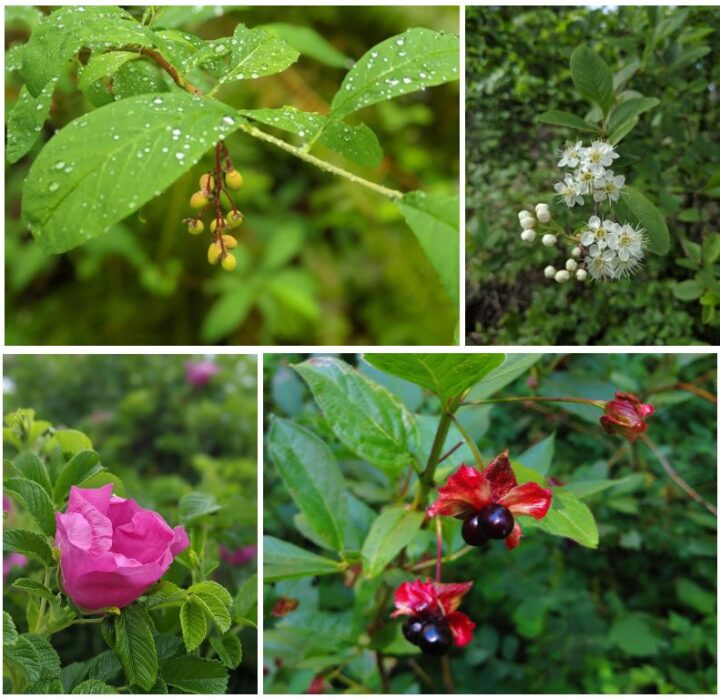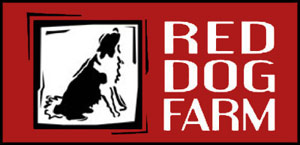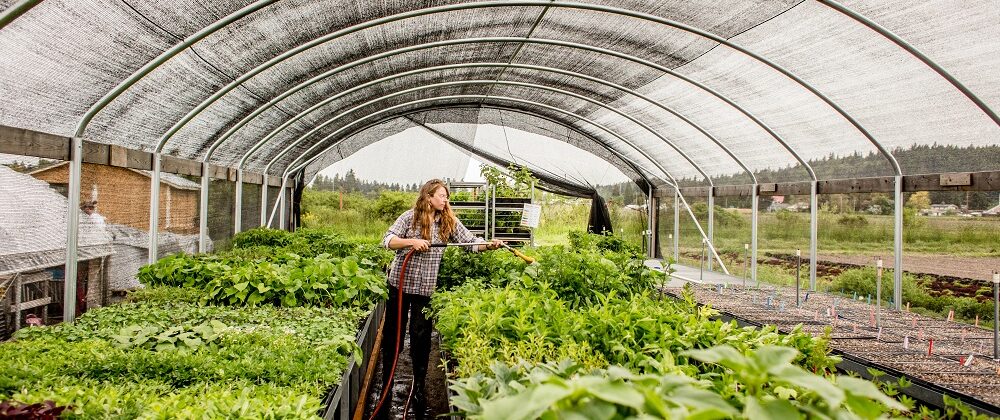Planting an Ecosystem
Being certified organic means Red Dog is required to “maintain or improve the natural resources of the operation, including soil and water quality,” according to the rules of organic certification. One way the farm has done this is to plant dozens if not hundreds of native shrubs and trees around the property.
As you come up the driveway to the Farmstand, you pass a row of assorted shrubs. Right now, a couple blue elderberries are flowering, and both Nootka and baldhip roses perfume the air. Black twinberry have just finished flowering and are now putting energy into their namesake pairs of shiny, dark berries. Tall Oregon-grapes and osoberries have also just finished flowering.
One edge of the farm follows Chimacum Creek, where more damp-tolerant native shrubs and trees have been planted. A dense thicket of willows, ninebark, and bitter cherry creates habitat for songbirds that serenade the crew as they work.
These plantings offer so many benefits. They provide habitat for butterflies, insects, and birds. They suppress invasive species of plants and animals. They slow the erosion of soil into the creek and shade the water, which benefits the summer chum, coho, and cutthroat trout that spawn there.
The farm also benefits. Insects that are attracted to the plantings pollinate our crops. A diverse ecosystem reduces the loss of crops to pests, since predators of pests are likely to live nearby. The greenery next to the creek soaks up water during winter floods, so our fields spend less time under water in spring. Plus, the crew enjoys listening to white-crowned sparrows and watching for harrier hawks as they work.
Being organic doesn’t just mean growing produce without synthetic pesticides. Being organic means supporting a beautiful ecosystem of organisms who enjoy growing, living, and working here.

~Rachel

